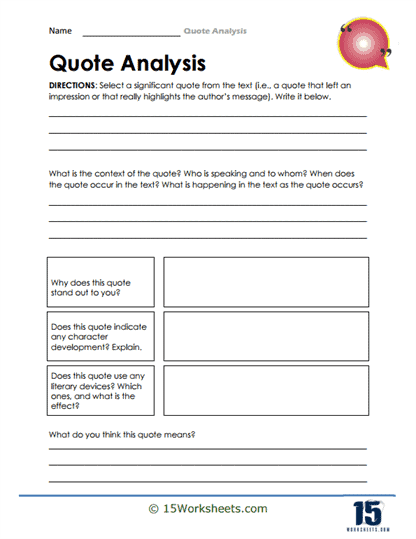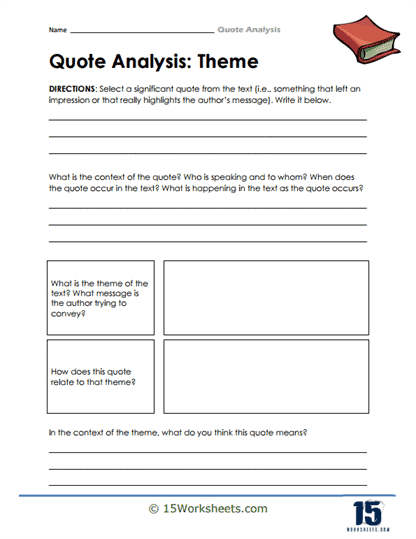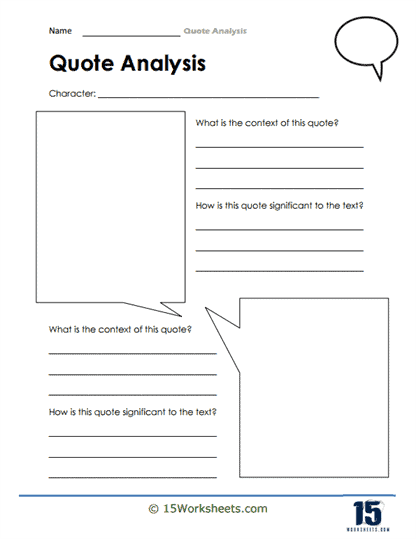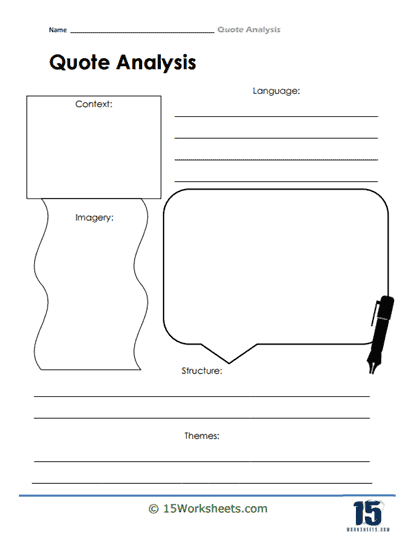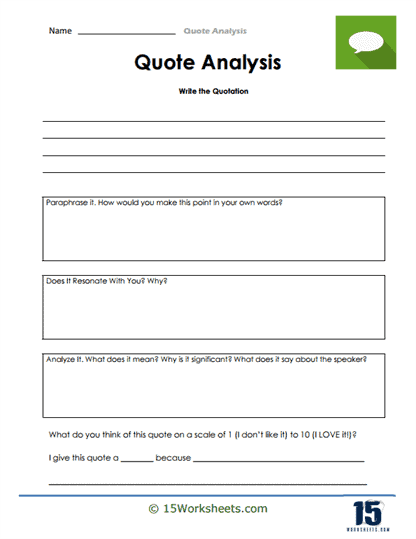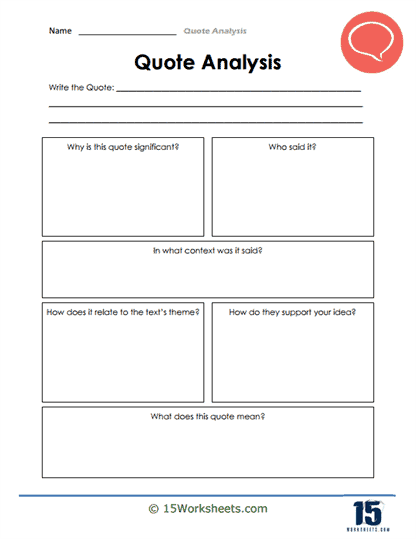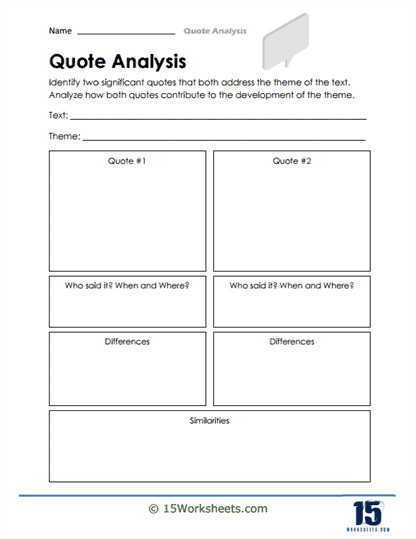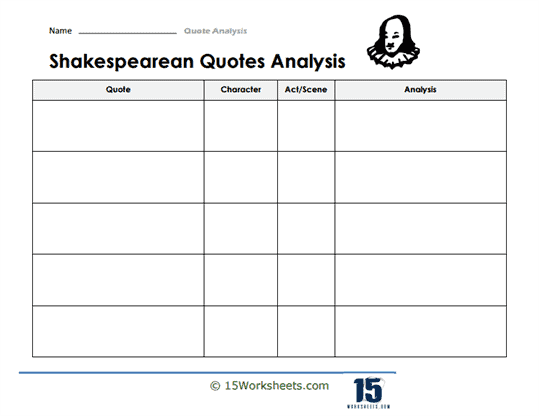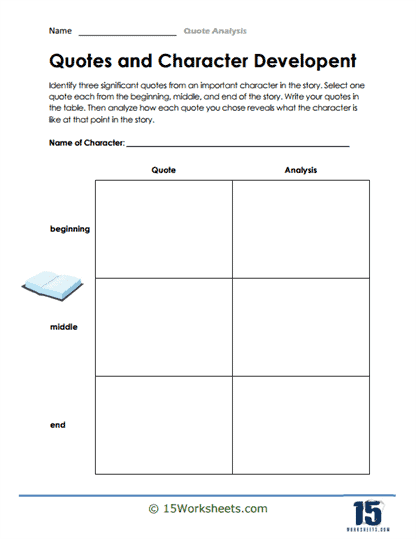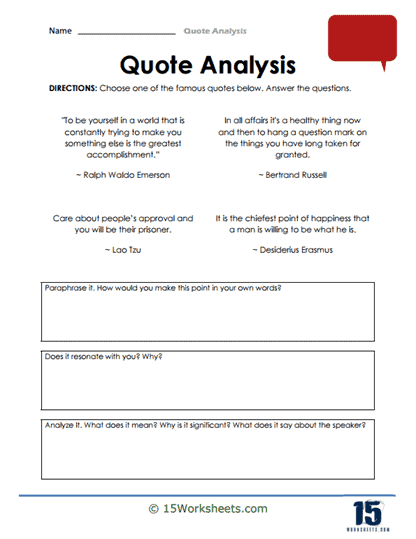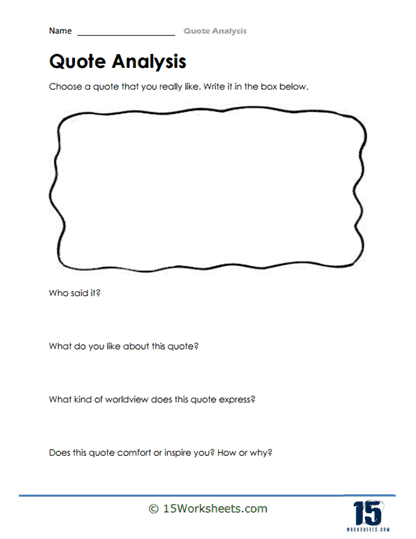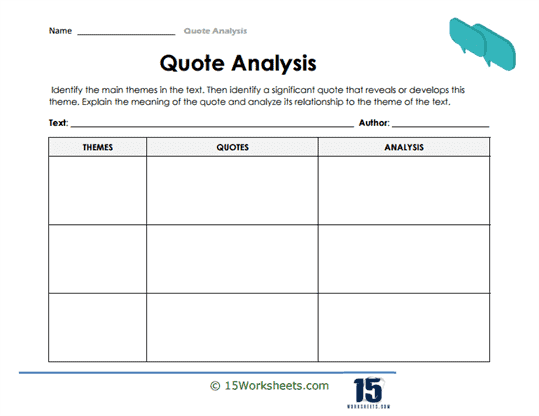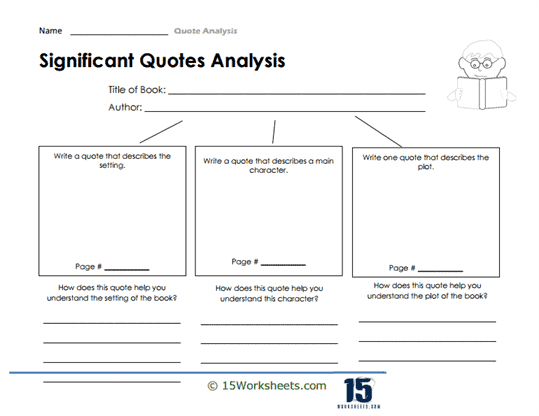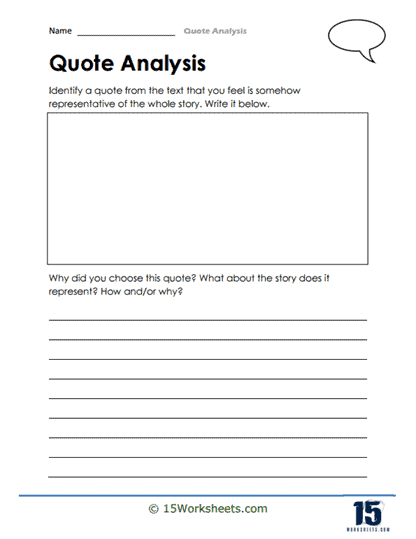Quote Analysis Worksheets
All About These 15 Worksheets
To analyze a quote, you need to be thoughtful yet accurate. You must factually present the quote and recognize that it has a broader concept. By paraphrasing the quote, you can provide an understanding of it.
All you have to do is break down the writing style and think about what makes the quote so crucial to your readers.
1. Draw Attention to the Figurative Language
Any quote, whether spoken or written, has a unique structure and linguistic style. When you look at a quote, you need to note any kind of figurative language that has been used, whether similes, idioms, metaphors, hyperbole, personification, or allusion.
These add depth to the quote and may provide a dual meaning to the words used, making the quote more impactful.
2. Understand the Tone of the Quote
If you want to successfully analyze a quote, you need to showcase the significance and impact it has. This can be done by outlining its tone. Factors like sarcasm can change the meaning of a quote, while negativity can enhance its meaning.
Make a note of the mood and tone of the quote and mention if it is symbolic of the person who spoke or wrote the quote. For example, the author’s tone can be described as nostalgic, evasive, earnest, enthusiastic, impartial, whimsical, ironic, or bitter.
3. Figure Out if Alliteration Has Been Used
Alliteration, A common literary tool, helps create a musical effect that makes a quote easier to read and learn. The writing technique is commonly used to put together a string of words with the same first consonant.
When you analyze a quote, identify whether alliteration has been used and note how it makes the quote more recitable.
4. Talk About the Source of the Quote
Once you introduce the quote, you will analyze and talk about its context. This means providing information about who said it, when it was, and where the incident occurred.
Talk about the individual’s background and why the quote was said. You should also mention the medium that was used to make the quote.
5. Write Down the Quote
As a general rule of thumb, you must present the quote the same way it was originally presented. This means using the same spelling and punctuation and capitalizing the same words as the quote.
Even if you think something in the original quote is not grammatically correct, it is not yours to change. In case you quote an interview, speech, or lecture, produce the original transcript to ensure that it is accurate.
6. Talk about the Meaning of the Quote
One of the most basic steps of analyzing a quote is rephrasing it according to your understanding. You can start by using the phrase “in other words” and explain different ideas that the quote represents based on your understanding. However, do not stray too far from the original meaning of the quote.
7. Emphasize the Significance of the Quote
Depending on the time frame of the quote, link it to a bigger event, theme, theory, movement, or motive. This will help justify the way you have analyzed the quote. Remember to be concise and convey the quote’s message within 2 to 3 sentences so that the reader does not get confused.
You should also talk about how the quote affects its audience. For example, if it entices feelings of sorrow or fear, introduce the emotion to your audience.

